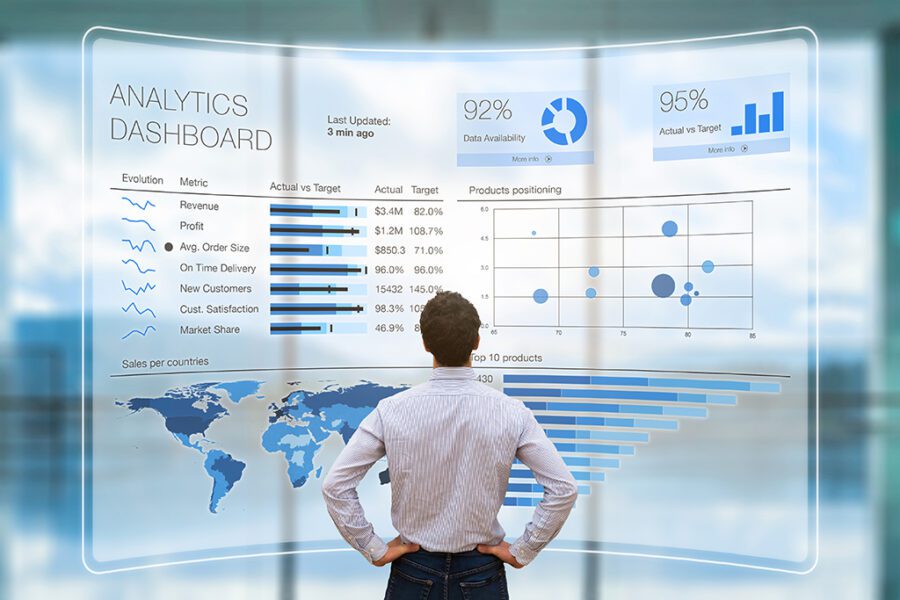Data is a valuable asset that has become an essential element of the business world. It is able to either make or break the company. Power BI, Microsoft Fabric and other powerful tools are employed by companies to unlock the full potential of their data. These platforms are at the core of business intelligence and when paired with Azure Data Factory they become a powerful force for data analytics and decisions.
Power BI: Your Business Intelligence Companion
Power BI, a product of Microsoft, is a comprehensive business intelligence tool that is designed to help organizations visualize and share information from their data. It allows users to design interactive dashboards and reports by transforming data from raw into actionable insights.

If you’re a small start-up or a large company, Power BI adapts to the needs of your business. Power BI combines seamlessly across various data sources and makes it simple to consolidate information from various platforms and databases. With its intuitive drag-and-drop interface even non-technical users will be able to quickly produce relevant reports and analyses.
Power BI supports real-time processing of data to ensure that you are always armed with the most current data. Power BI offers a range of visualisations that permit users to present data in a clear, interesting way. It is important to be able to share and collaborate on reports. This can improve the decision-making process within your organization and help create a data-driven workplace.
Microsoft Fabric The weaving Together of Data Excellence
Microsoft Fabric is the core system that connects and manages data across various Microsoft services. It’s the fabric that connects your data into one, usable entity, enabling organizations to draw insights effortlessly.
Microsoft Fabric is the foundation of data integrity and reliability as businesses face ever-increasing volumes of data. Microsoft Fabric integrates a wide range of applications, including Azure Data Lake Storage (Azure SQL Data Warehouse), Power BI, and more. The platform’s interconnectivity allows data flow and insight coming from a variety of sources.
Microsoft Fabric’s capabilities to transform data are a great example of its versatility. Use it to clean up and prepare data to be analysed. Additionally, you can use it to ensure that your data is compliant to your organization’s guidelines on data governance. Microsoft Fabric assures you that your data is correct and reliable, ready to be analyzed.
Azure Data Factory: The Gateway to Data Transformation
Azure Data Factory is another essential component in the modern business intelligence landscape. This cloud-based service allows you to manage and schedule data-driven processes. Azure Data Factory provides meaningful information through the orchestration of data movement and transformation.
Azure Data Factory comes with a number of strengths, including the ability to integrate with many data sources. Your data can be incorporated seamlessly, whether on-premises, in the cloud or both. It will provide you with the complete picture of the whole data ecosystem regardless of where the data is located. The platform can handle batch processing, real-time streaming of data and big-data analytics. This makes it suitable for many scenarios.
Azure Data Factory has a visually-oriented user interface that eases designing data pipelines. You don’t need to be an expert in programming to create, plan, or monitor data workflows. This empowers business users to make decisions about their data integration process and provides the means for self-service data preparation.
The Power Trio: Power BI, Microsoft Fabric, and Azure Data Factory
When Power BI is combined with Microsoft Fabric and Azure Data Factory They form an exciting trio that can revolutionize data analytics. How do they work together?
1. Data Integration Azure Data Factory can connect to multiple data sources, and guarantee that your data is available. Microsoft Fabric orchestrates the data of various services with this data integration capability. It makes sure that your data is properly organized, cleaned and ready to be analyzed in Power BI.
2. Microsoft Fabric’s Data Transformation feature is vital to satisfy your analytical needs. Fabric ensures that data is in the right state for analysis when it comes to cleansing or changing data.
3. Data Visualization: When your data is refined and ready, Power BI takes over. It allows you to create visually appealing dashboards and reports that make the data easier to comprehend. It allows you to share your information with your team, to encourage data-driven decision-making.
4. Scalability: Azure Data Factory can adapt to growing numbers of data. Combining Power BI with Microsoft Fabric will make sure that your data is stable and reliable even when your business expands.
5. Real-time Insights: Using real-time data processing capabilities, Power BI and Azure Data Factory provide up-to-the-minute insights that are vital for agile decision-making.
The article’s conclusion is:
To be competitive in the world of business intelligence companies must be able leverage data effectively. Power BI, Microsoft Fabric, and Azure Data Factory offer a powerful combination that can propel your business intelligence efforts to new levels. If you’re looking for stunning visualizations, make sure you have data consistency, or streamline the workflow of data, this trio has you covered. Embrace the power of business intelligence and make the most of your data.